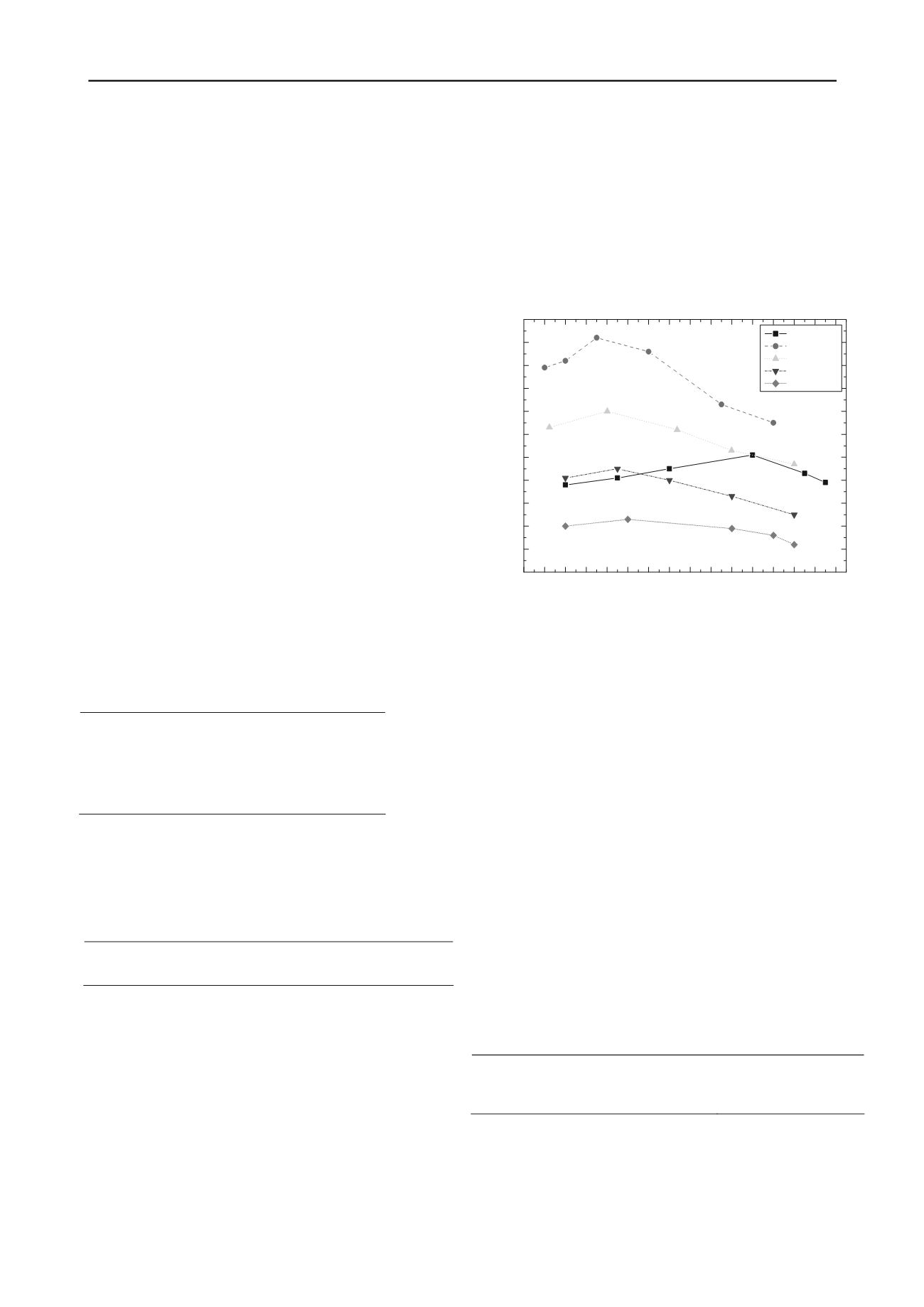
3168
Proceedings of the 18
th
International Conference on Soil Mechanics and Geotechnical Engineering, Paris 2013
and the effects of varying the amount were investigated. The
proposed soil improvement technique is thus showing great
promise in sustainable construction. Nataatmadja and Illuri
(2009) prepared an artificially reconstituted soils of different
plasticity values by mixing fine sand and sodium bentonite. It
has been found that the addition of EPS granules into these soils
results in light-weight backfill materials, suitable for reducing
swelling pressure behind domestic retaining walls.
The current research was conducted to investigate the
recyclability of EPS packaging products in reducing swelling
pressures on structures foundation by using recycled EPS beads
as a mechanical admixer in replaced soils at their optimum-
moisture contents. Mixing recycled EPS beads with soil
replacement
is
introduced
an
environment-friendly
geomaterials. The applications of recycled EPS as a swell shrink
modifier as well as desiccation controller of expansive soils
were considered in this study. The quantitative evaluation also
whether recycled EPS beads provides significant benefits for
use in soil replacement to reduce swelling pressures was done
through an extensive experimental program.
2 MATERIALS
2.1
Replacement Soil
The replacement soil was sub-angular silica sand and classified
according to the unified soil classification (USCS) system as a
poorly-graded clean medium to fine sand (SP) with coefficient
of curvature (C
c
)= 1.73, coefficient of uniformity (C
u
)=3.6 ,
max dry density (
dmax
=19.2kN/m
3
) and optimum moisture
content (OMC)= 9%.
2.2
Expansive Soil
The expansive soil was a sodium Bentonite. The physical
properties for the used Bentonite are summarized in Table 1.
Table 1. Physical properties of the used Bentonite
Liquid Limit (LL) %
143
Plastic Limit (PL)%
47.6
Plasticity Index (PI) %
95.4
Free Swell (FS)%
96.7
Specific Gravity (Gs)
2.55
Max Dry Density (
dmax
) kN/m
3
14
Optimum Moisture Content (OMC) %
24
2.3
Recycled EPS Beads
For the present study, waste EPS beads were collected with
three different beads densities and particle sizes. Photo 1 shows
the beads's size compared to sand particles. The beads densities
and particle sizes are summarized in Table 2.
Table 2. Properties of EPS Beads
EPS Beads
400
500
600
Density (KN/m
3
)
0.10
0.16
0.20
Particle Size (mm)
5-6
4-5
1-3
3 COMPACTION CHARACTERISTICS OF SAND EPS
MIX
To study the compaction characteristics, standard Proctor
compaction tests were performed on a number of sand EPS
mixes. With the addition of EPS beads, the density of the
resulting composite is much lower than the original soils.
The EPS beads were added to the moist soil at a certain
percentage of the soil’s dry mass. Compaction tests of the sand
with EPS (SWEPS) composite were subsequently carried out
immediately after mixing the sand and EPS.
Compaction curves for mixes of sand with different percentages
of EPS beads are shown in Figure 1. From this figure, it can be
observed that with the addition of EPS beads the dry density of
the resulting mix varies considerably, it decrease with
increasing the beads content but there is no significant variation
in the optimum moisture content. This can be attributed to the
low bulk density and very low moisture absorbency of the EPS
beads. Since the beads are bulk in volume but very low in mass,
the mass of the soil-EPS composite is generally controlled by
the mass of the soil in the mix. Furthermore, as the moisture is
held within the soil particles, the optimum moisture content of
the mix is controlled by the optimum moisture content of the
sand. From previous stud it is found that the increase of EPS-
beads density increases the maximum dry density at the same
beads ratio, Abdelrahman,( 2009)
2 4 6 8 10 12 14 16 18 20 22 24 26 28 30 32
10
11
12
13
14
15
16
17
18
19
20
Maximum Dry Density,
d
, kN/m
3
WC%
Bentonit
Pure sand
0.3% Beads
0.6% Beads
0.9% Beads
Figure 1. Compaction curves for mixes with sand and EPS contents
at density of t EPS beads = 0.16kN/m
3
4 EXPERIMENTAL WORK
4.1
Test Model
Experimental model consists of cylindrical soil sample
container with diameter is 15 cm and height = 18cm , two
vertical dial gages to measure the settlement and swelling ,
circular footing with different diameters. Vertical stress equal
to 30 kN/m
2
was applied on the footing which represented the
applied stress of three stories building.
4.2
Test Program
A series of tests were performed on circular footing with
different diameters rested on sand EPS mix replacement layer
with different ratios of EPS beads and layer thickness above
Bentonite layer both sand EPS mix replacement layer and
Bentonite layer were compacted at their optimum moisture
content (OMC). Mixing EPS beads with sand replacement layer
leads to settlement under loading condition before adding water
to the swelling layer cause EPS beads are compressible material
and this explain why swelling and settlement are discussed
together in the test results. The studied parameters are
summarized in Table 3.
Table 3. The studied parameters
Diameter of footing (d) cm
5, 7, 10, and 12
Beads Density (
B
) kN/m
3
0.1, 0.16 and 0.2
Beads Content (B) %
0, 0.3, 0.6, 0.9, and 1.2
Normalized Replacement Thickness (t
r
/t
s
) %
0, 12.5, 20, 25 and 33
4.3 Test Results and Analysis
4.3.1 Test results presentation
Swelling and settlement on surface soil and circular footing are
presented in a set of curves with the different studied
parameters.


